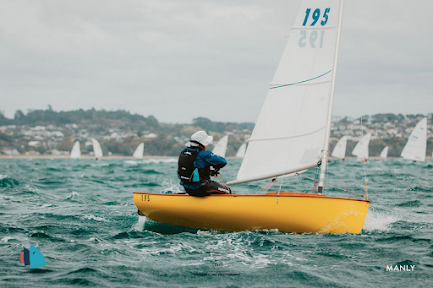The NZOKDA (New Zealand OK Dinghy Association) runs a 'Traveller' series at different venues around New Zealand. I attended my third in the series for this year and the most recent at Stump Bay, Turangi on the shores of Lake Taupo, North Island New Zealand. I can't capture the essence of the weekend any better than Rod Davis - former Olympic Medalist, Americas cup helmsman and OK Dinghy aficionado and enthusiast. I think he speaks for all those who attended what was a brilliant Kiwi sailing event:
Turangi International Regatta
Article by ‘Coach’ (Rod Davis)
More of a pilgrimage really, to Stump Bay, and Wally’s team of magical volunteers who simply make
things happen when it comes to great regattas.
27 of the class faithful, from all across the land, made the journey to the mecca of grass roots OK
sailing. Making it the biggest Turangi regatta ever, or at least in living memory. What sets this
regatta apart from other regattas? Everything.
Notice of race is four lines long. Sailing instructions, everything you need to know, courses, briefing
and start times, etc, in just six lines. Not pages but SIX lines. The lack of ‘officialdom’ is one of
grass roots sailing’s biggest attractions.
Think of the fun where courses are set, races are run, no
one complains, where everyone is more interested in having fun racing than worrying about being
procedurally correct.
Wally (commodore of Turangi Yacht Club) and his team have run this regatta for as long as I can
remember and it’s a damn good thing too, as Stump bay in March can be challenging. Often the
wind is very light, too light for most clubs to race. But not for Wally. If there is enough wind for the
boats to move, we will start the race. Classic ‘Wally calls the tune, we do the dancing’. Never a
complaint is heard because we embrace it.
It’s a point of difference in regattas: when other clubs would sit on shore waiting, we are on the
water racing. Also makes for the stuff of legends - last year Oscar won a race while drinking a beer!
How good is that? Grass roots yachting fun.
Another calling that draws the crowds, almost everyone sleeps on the club grounds. Pitching tents,
camper vans, or sleeping in the cars, we are all together living basic for two days, a great equaliser
and glue to bond OK Dinghy sailors of wildly diverse backgrounds. From farmers to sailmakers, new
sailors to the class, to veterans of decades of OK sailing. All as one team.
After sailing, beers fire up the talks of sailing techniques. By the time of the fabulous BBQ (thank
you Cowboy, Brenda and volunteers) the conversations moved to families and life, and later into the
night, as late as you want to go, the chat comes around to ‘setting the world right’. (Who’s kept the
notes on that again?)
The class has grown from the old adolescent days of bon fires and burning boats (never OKs) to a
calmer balance of cutting loose and reasonability.
OK, that sets the scene, now to the racing. The thing about this regatta is don’t over think the
tactics. There is bit of craziness in how the wind field comes down the race course. Sail in the ‘here
and now’ is the best advice I can give.
This year Stump Bay turned it on with 6-16 knots of wind. Champagne sailing as they say in press
release,s but in this case it was for real.
27 boats and seven races that were just 30 minutes long meant lots of action across the fleet at
each of the marks. Every one had races that went very well for them, and others that didn’t work
out as well as they might have. Interestingly, the final points had almost every place within a couple
of points of the sailor ahead or behind. Meaning no matter where you were in the fleet, every point,
every place in each race mattered when the tally was totalled. As it should be in great racing.
Steve McDowell resumed his winning ways with a strong performance winning three races and the
regatta. He should have won a fourth race but fell out of his boat on the final tack to the finish.
Maybe he did that to make us all feel better when we make big mistakes or capsize. Or maybe he is
a mere mortal after all. Luke Gower’s guest appearance and brilliant sailing earned him a second,
and your reporter here, another two points back in third.
Steve and Sean Cleary both won the ‘Tiki’ for winning the last race of each day. Other notable
performances - Simon Probert was on fire after getting his boat back from Jenny Craig 3kg lighter.
Trent Pryce had finishes of 5, 5, & 7 showing form that paves the way to good things in the future.
Finished, packed up and driving home by two and home before dark.
The perfect regatta.












































